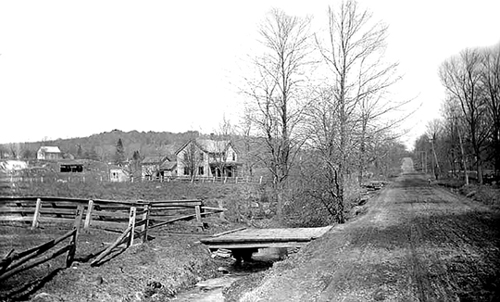Mildred Kozsuch, local author of “Historical Reminiscences of Carter County Tennessee,” The Overmountain Press, sent me an informative clipping from the July 9, 1937 edition of the Johnson City Beacon titled “Only One Building Linking City with Stage-Road Days.”
The article lamented the fact that only one downtown building remained as a reminder of the old Civil War era Stage Road (now Market Street) that loped through the city. The two-story building was located at 144 E. Market Street (southwest corner at Roan) made of hand-made brick that had been formed and burned locally. Sadly, it was demolished several years ago. In 1937, it was the site of a barbershop; today, it houses the popular Taste Buds restaurant.

Some early store owners at that spot were Bob and John Rankin; John W. Hunter; Selden Nelson; Christian and Crockett; Christian, Hoss and Hodge; and Hoss, Hodge and Company. In later years, it served as a grocery store, barbershop and bookshop. The upstairs ranged from a storage facility to a beauty parlor.
John Rankin and his descendents lived in a hand-made brick home, built shortly after the Civil War, in the southeast corner of the intersection. Dr. J.C. King whose wife was a daughter of Rankin later occupied the home. The site eventually became a music studio operated by teachers Hunter L. Rhea and Mary L. Lyle. Afterward, it became the Spinning Wheel Tea Room.
The dirt Stage Road became a popular travel route of covered wagons, horsemen and even troupes and artillery that passed through the diminutive Johnson City, referred to then as “Brush Creek Flats.” The Tipton Jobe home (at Tipton and Jobe streets) was alleged to be the first one in Johnson City. City founder, Henry Johnson, built a store on the old Stage Road. In 1937, the Square Drug Company (101 W. Market) occupied the site. Older residents will remember that location as being on the east side of the Skippers Shop.
The next store, that of T.A. Faw, was on the artery at the railroad where the Southern Café (101 E. Market, later Byrd’s Restaurant) was located. Eventually, a newsstand and an upstairs rooming hotel opened there. The Faw home and spring was situated at Market and Roan where the John Sevier Hotel would be built.
Those establishments were about the only ones on the old highway at that time. Farther “out in the country” on the northwest side of Watauga Avenue and Market Street was “the old Methodist camp meeting ground, beside the Harrington Spring, then marked by a filling station and the swimming pool, plus a few residences.” Locals will remember the station as becoming Collins’ ESSO Service Center and the pool having multiple names – Watauga, Sur Joi and Carver.
Businesses flourished along old Stage Road with its nucleus on Fountain Square. The thoroughfare became the principal business street of the village for many years north of Johnson’s railroad depot (between Main and Market streets).
The article concluded by saying that the pedestrian foot log across Brush Creek at about the present location of McClure Street was replaced by a footbridge. However, passing vehicles had to ford the creek.
On one side of the road, a Hale family ran a large handsome livery stable. Opposite it was Eli McNees Blacksmith Shop (future site of the Arcade Building). Their residence was near the rear of the old Tennessee Theatre. A loom house was said to be close to it.
I wish to thank Mildred Kozsuch for sharing such an interesting article with Press readers.

Comments are closed.